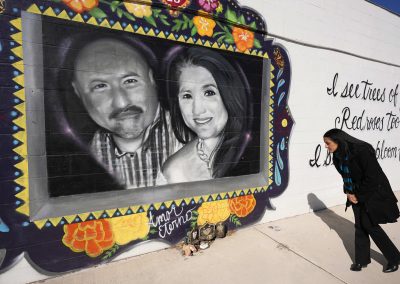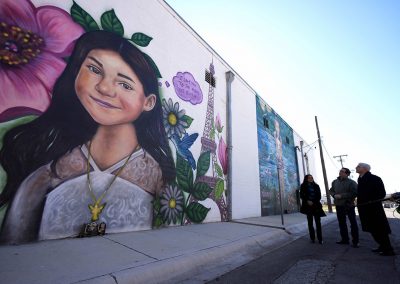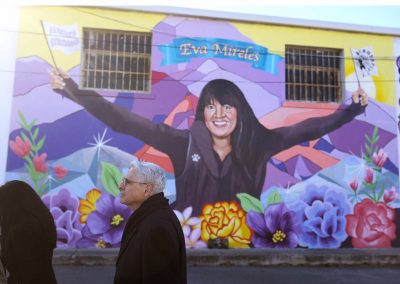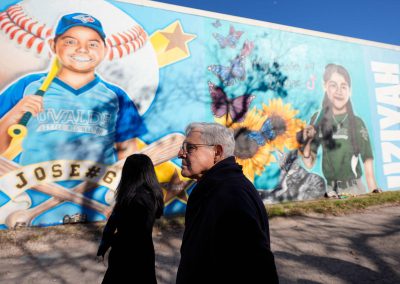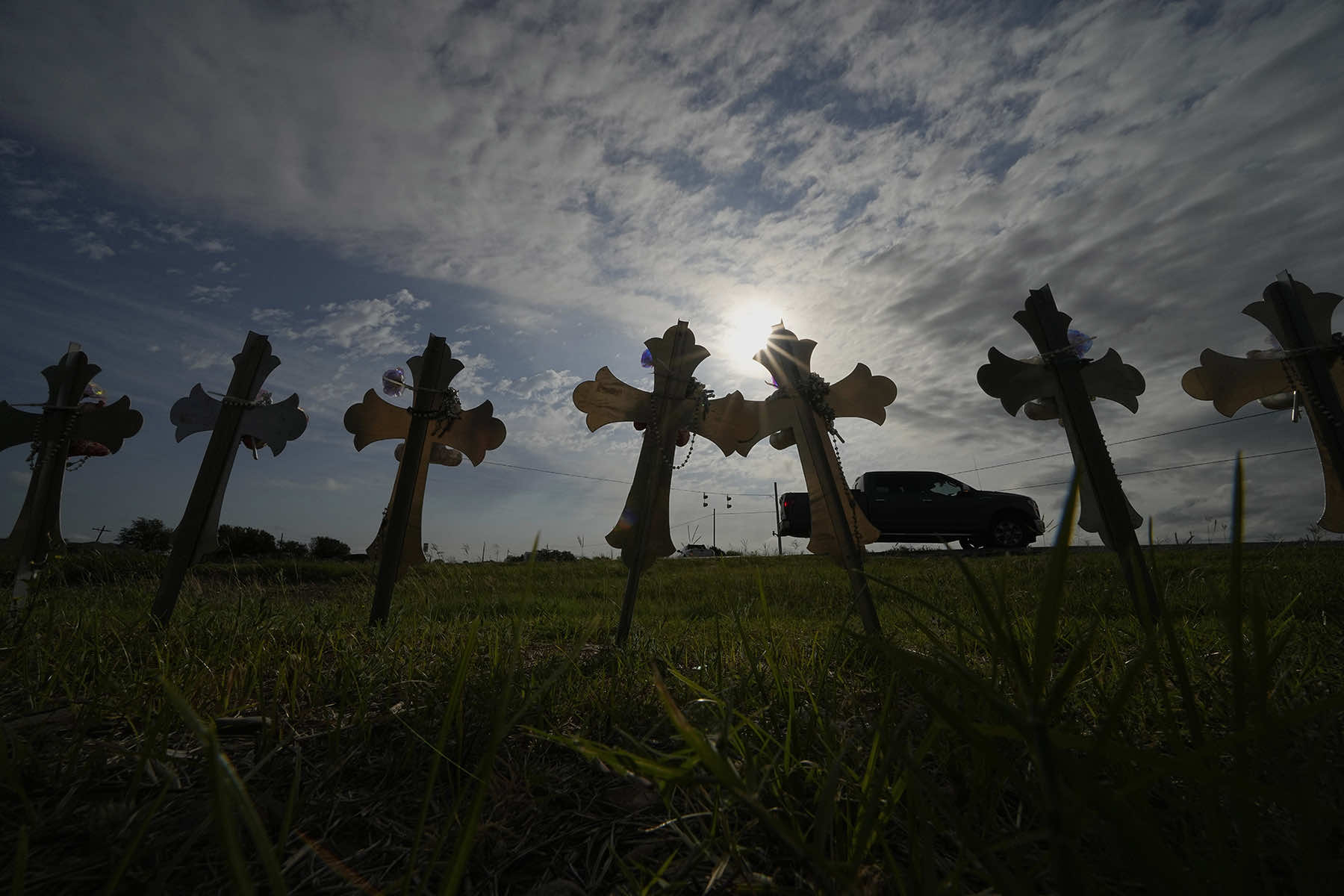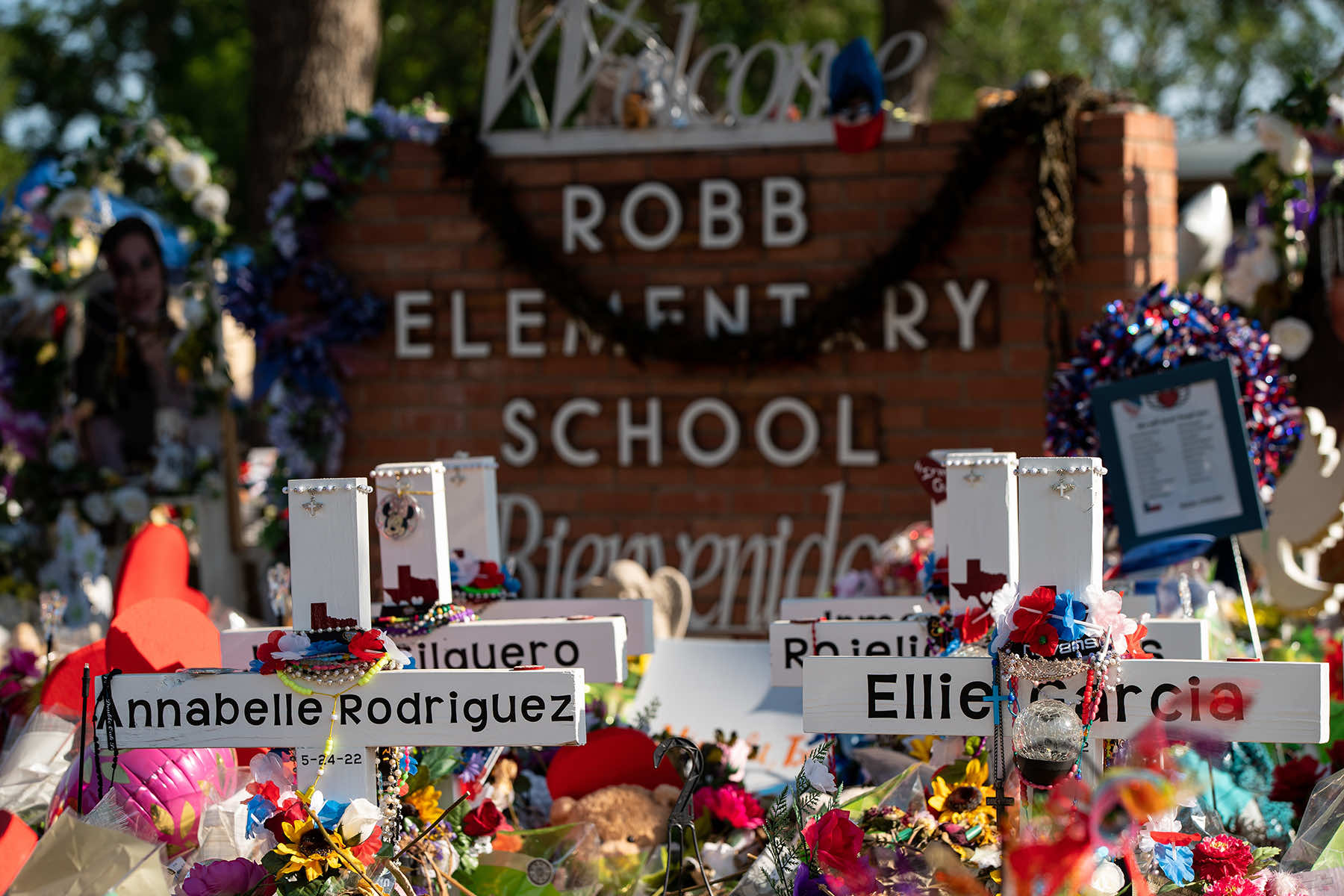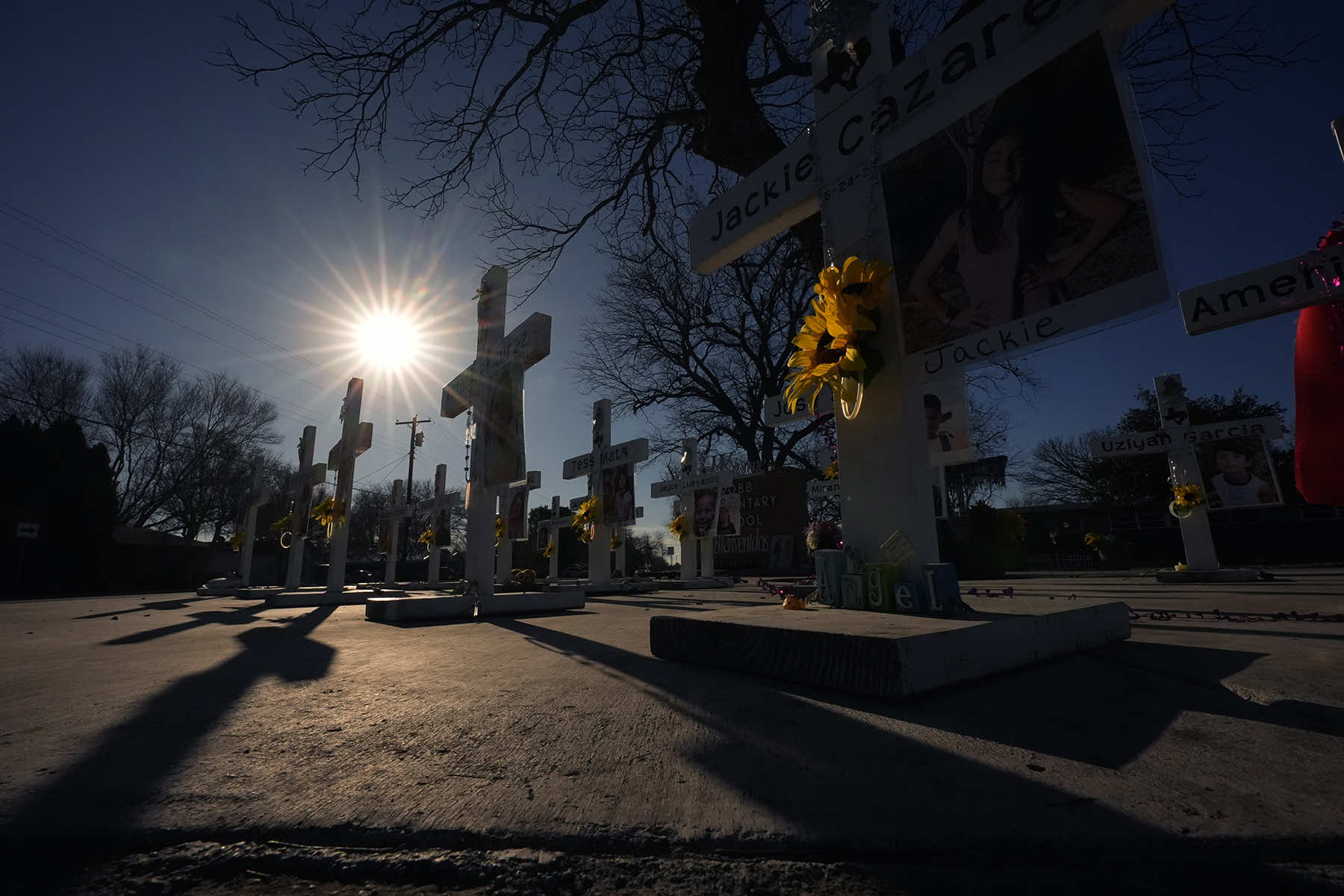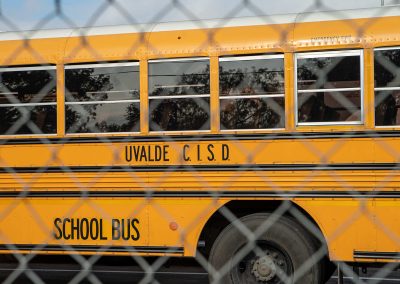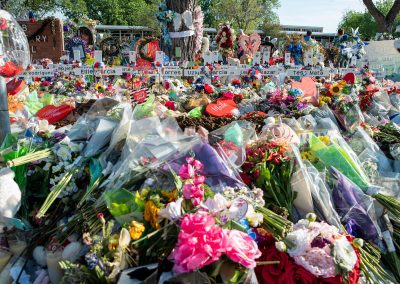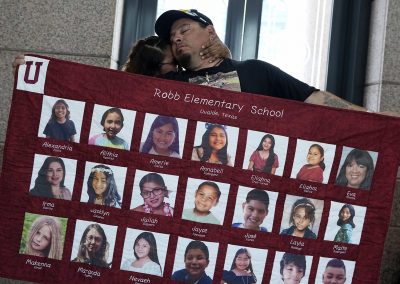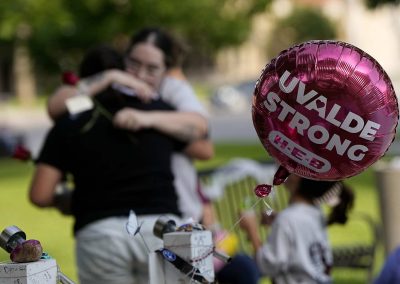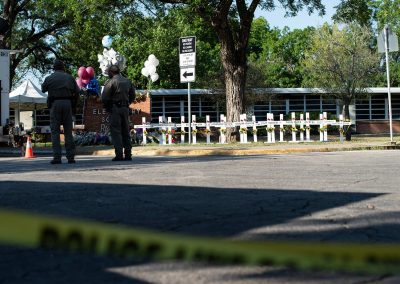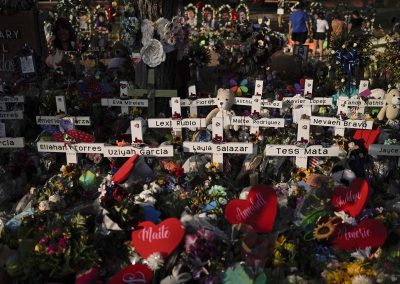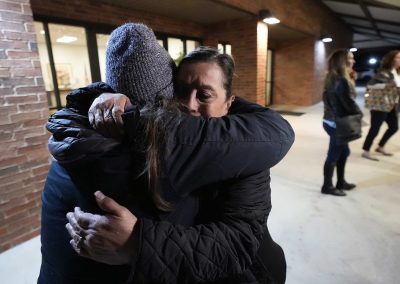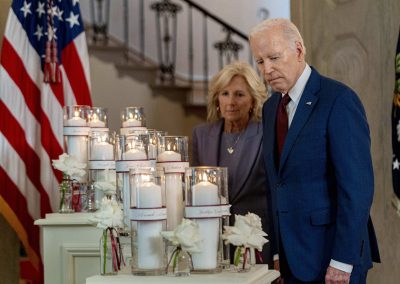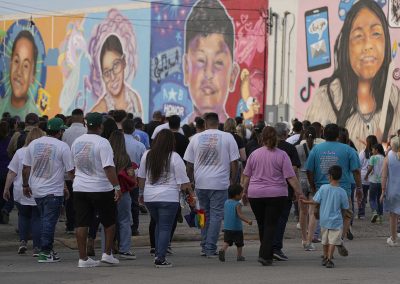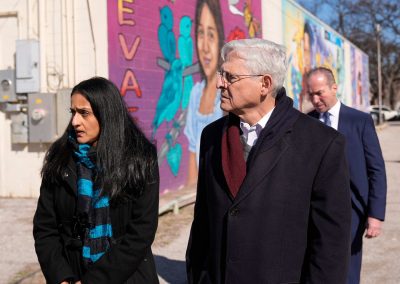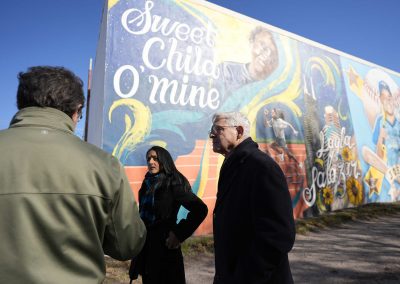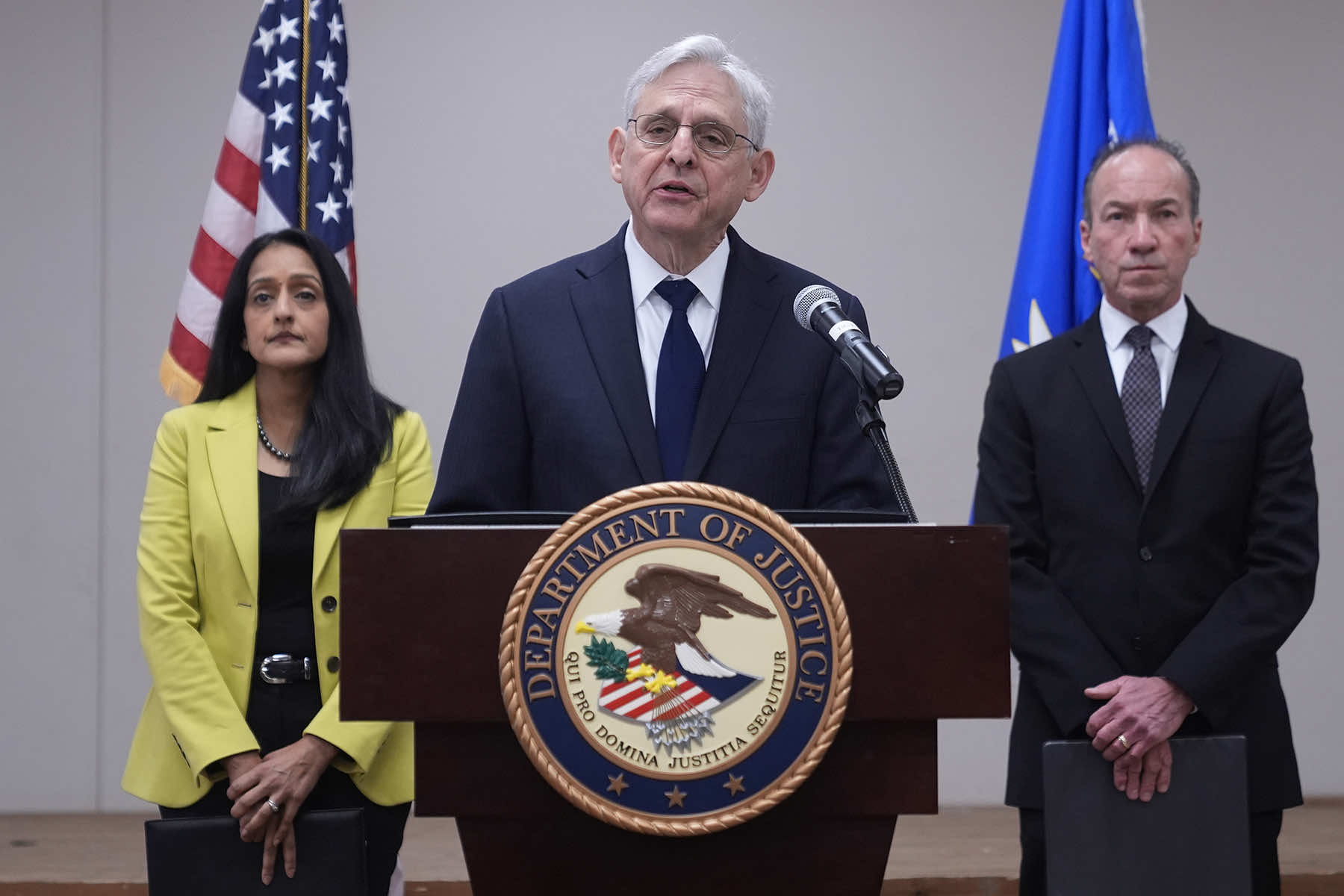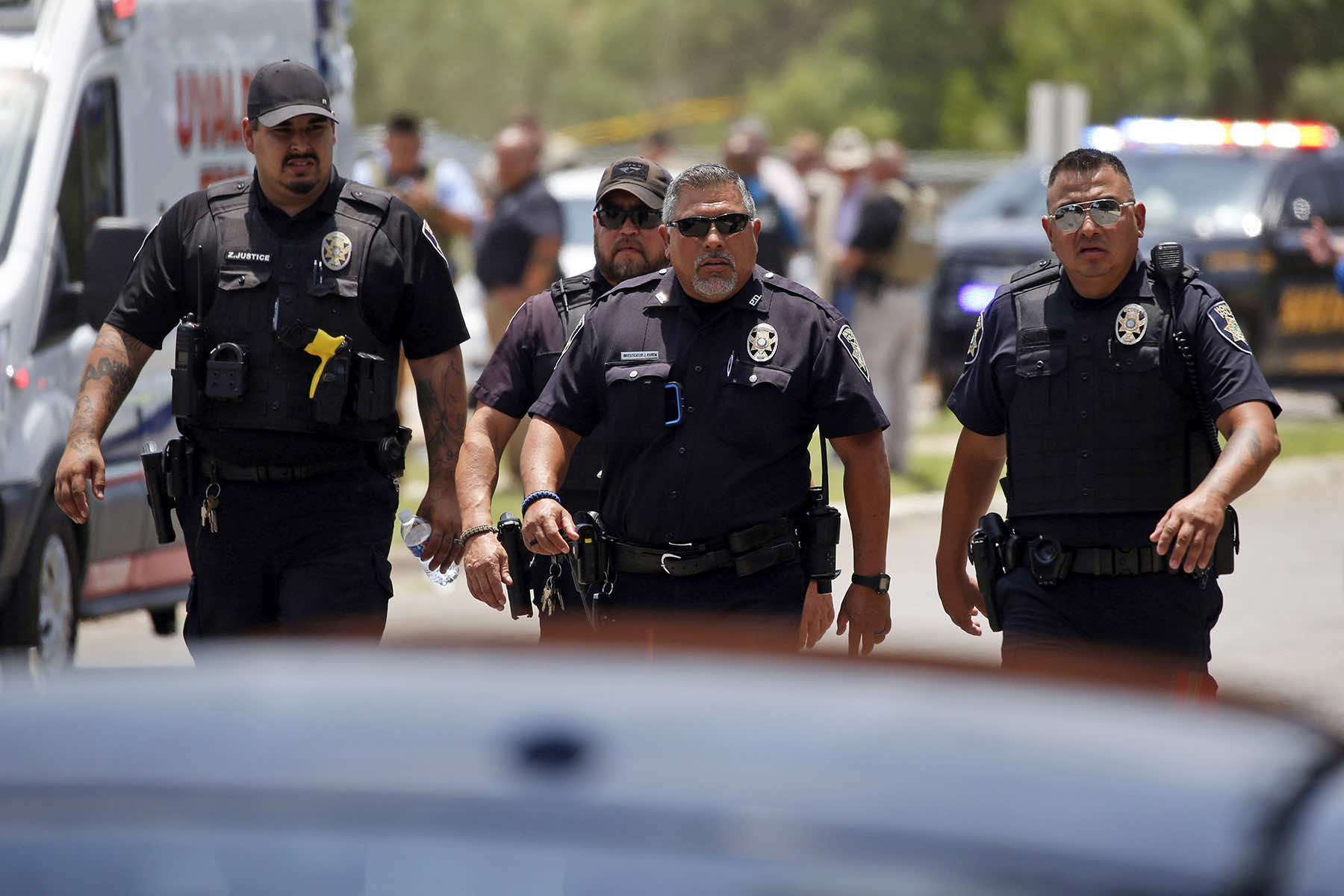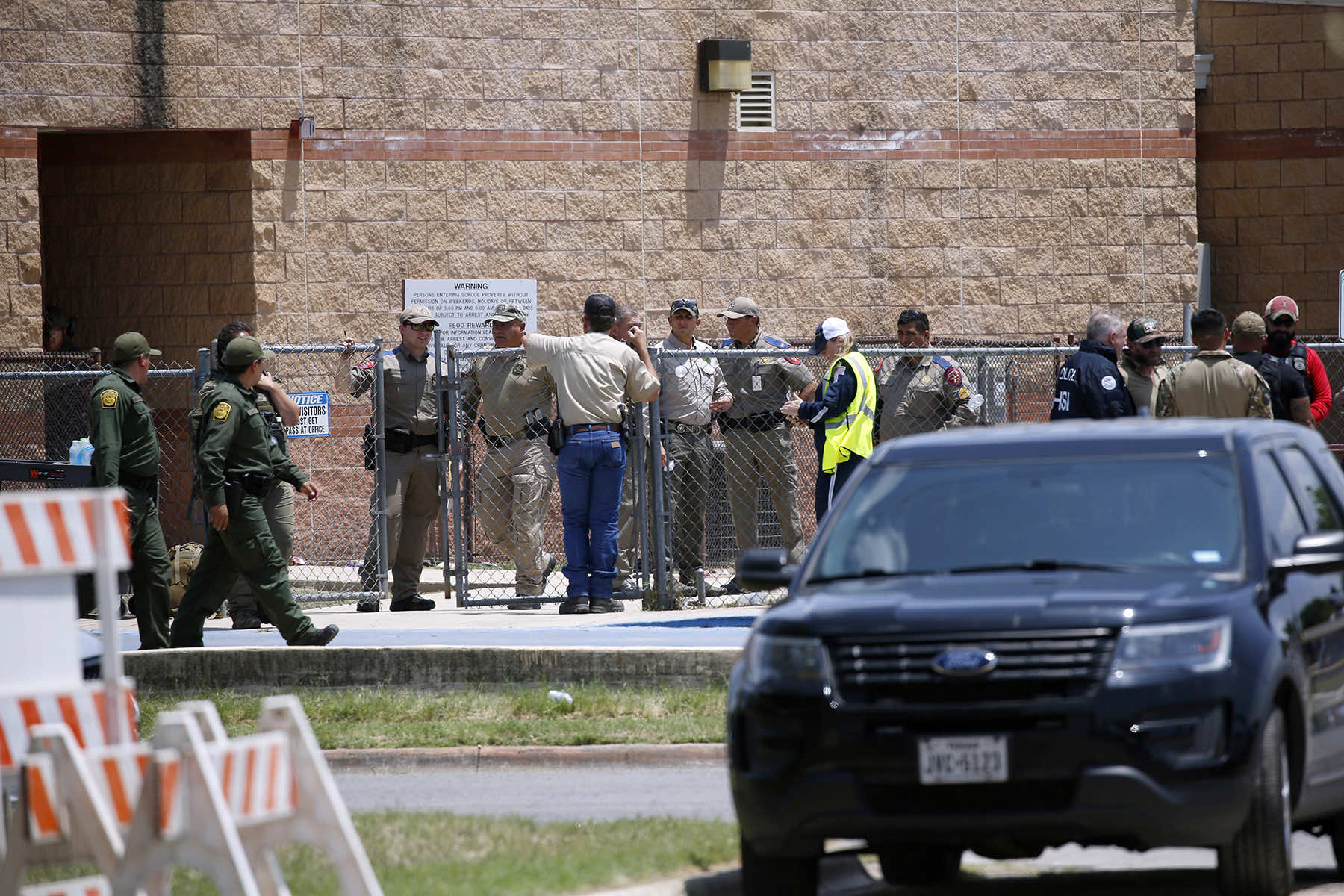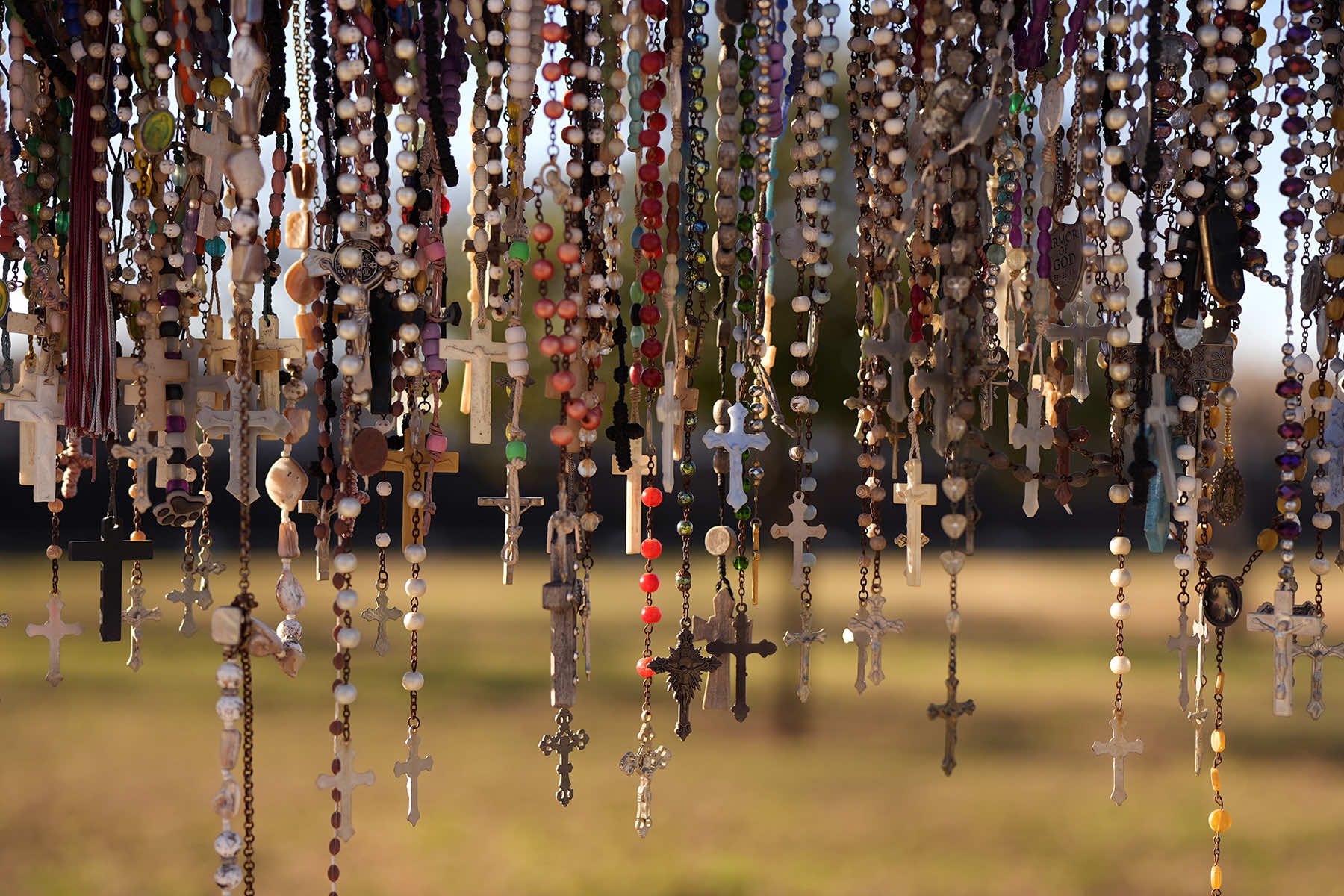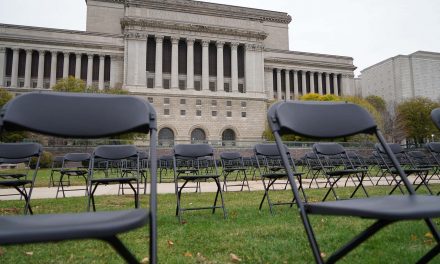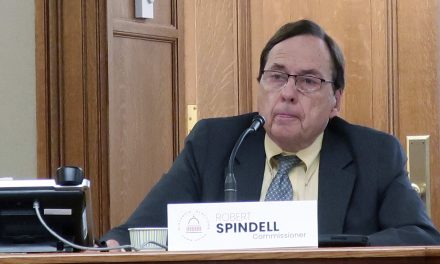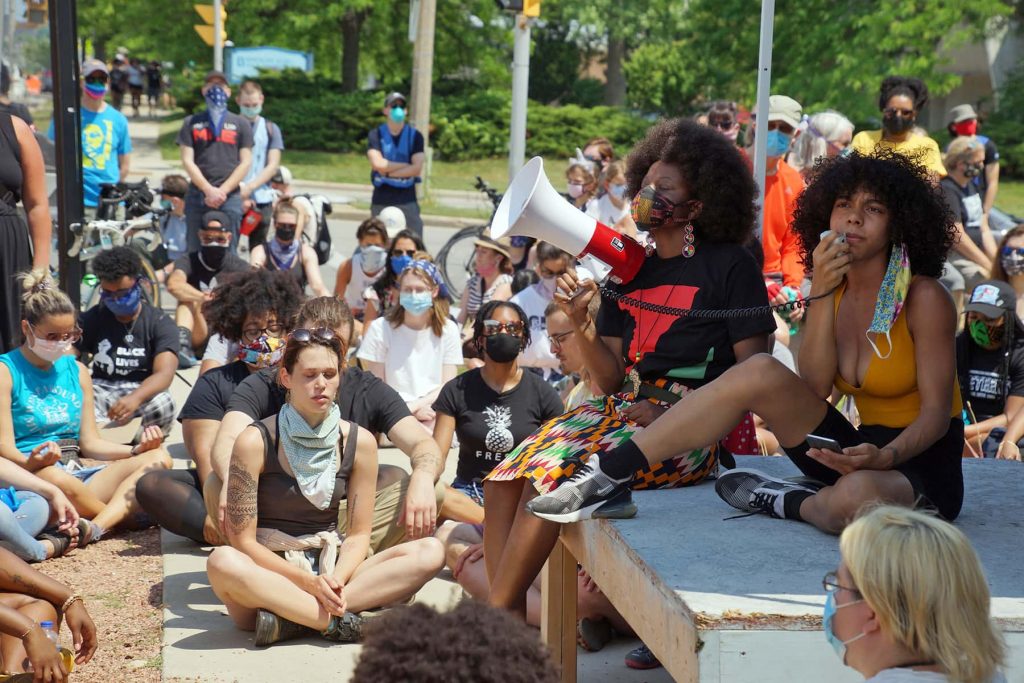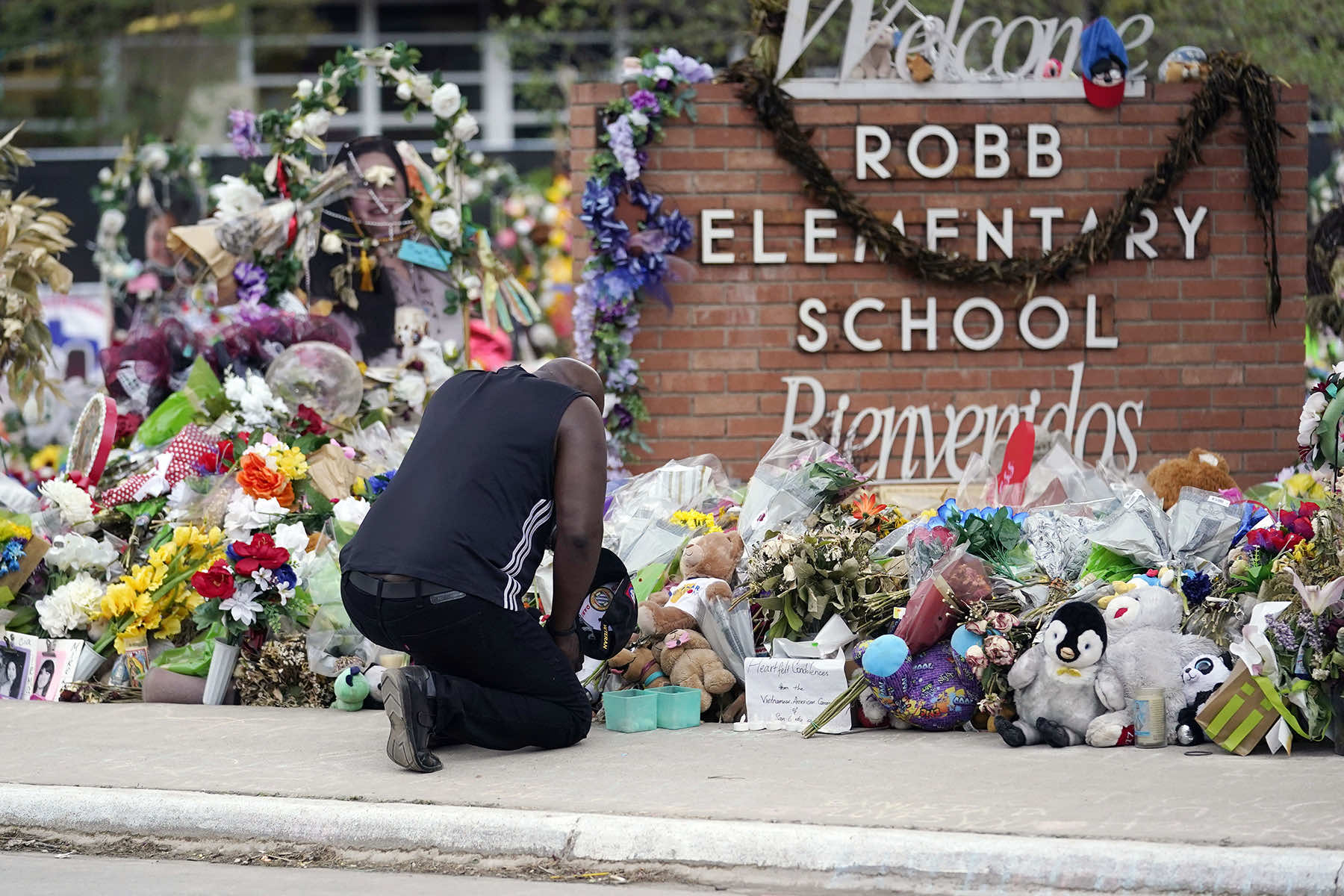
Police officials who responded to the deadly school shooting in Uvalde, Texas, “demonstrated no urgency” in setting up a command post and failed to treat the killings as an active shooter situation, according to a Justice Department report released on January 18 that identified “cascading failures” in law enforcement’s handling of one of the deadliest massacres at a school in American history.
The Justice Department report, the most comprehensive federal accounting of the haphazard police response to the shooting at Robb Elementary School, identified a vast array of problems from failed communication and leadership to inadequate technology and training.
Federal officials say these issues contributed to the crisis lasting far longer than it should have, even as terrified students inside the classrooms called 911 and agonized parents begged officers to go in.
“The victims and survivors of the mass shooting at Robb Elementary School deserved better,” Attorney General Merrick Garland said in a statement. “The law enforcement response at Robb Elementary on May 24, 2022 — and the response by officials in the hours and days after — was a failure.”
In response to the epidemic of school shootings nationwide, right-wing gun advocates have lobbied for enhancing school security instead of legislating common sense handgun control measures. They have repeatedly argued that safety could be achieved through measures like funding a school district police force, arming teachers, or securing the school grounds through controlled access points. The Uvalde Consolidated Independent School District was considered a textbook example of implementing that flawed ideology, yet it repeatedly failed to stop the shooter or save students.
Even for a mass shooting that has already been the subject of intense scrutiny and in-depth examinations, the nearly 600-page Justice Department report adds to the public understanding of how police in Uvalde failed to stop an attack that killed 19 children and two staff members.
Uvalde, a community of more than 15,000 about 85 miles southwest of San Antonio, continues to struggle with the trauma left by the killing of 19 elementary students and two teachers, and remains divided on questions of accountability for officers’ actions and inaction.
The shooting has already been picked over in legislative hearings, news reports, and a damning investigation by Texas lawmakers who faulted law enforcement at every level with failing “to prioritize saving innocent lives over their own safety.”
Uvalde school district officers arrived within three minutes of Ramos’ arrival at the school and ran toward the classroom, but as they approached, Ramos fired from inside the classroom. Two officers were hit by shrapnel and police retreated to take cover.
“An active shooter with access to victims should never be considered and treated as a barricaded subject,” the report says, with the word “never” emphasized in italics.
The 376 officers at the scene included state police, Uvalde police, school officers, and U.S. Border Patrol agents. A tactical team led by the Border Patrol eventually went into the classroom to take down the gunman.
In Texas, Republican Governor Greg Abbott initially praised the officers’ courage, and blame was later cast on local authorities in Uvalde. But a report from a panel of state lawmakers and investigations by journalists laid bare how over the course of more than 70 minutes, a mass of officers went in and out of the school with weapons drawn but did not go inside the classroom where the shooting was taking place.
The federal report also details well-documented communication issues officials say hindered the response, including then-school district police chief, Pete Arredondo, discarding his radios on arrival because he thought they were unnecessary.
Although Arredondo tried to communicate by phone with officers elsewhere in the school hallway, he told them not to enter the classrooms “because he appeared to determine that other victims should first be removed from nearby classrooms to prevent further injury.”
By that point, the students and their teachers had been trapped in classrooms with the shooter for 37 minutes, and the call lasted for 27 minutes. Even though law enforcement officials were in the hallway and just outside the classrooms, it would be another 13 minutes after the call ended before the survivors were rescued.
THE MOST SIGNIFICANT FAILURE
The Justice Department concluded that the chief failure was that police did not treat the crisis as an active shooter situation and engage the gunman quickly. Initially, several officers did approach the classrooms where students were trapped inside with the gunman, but retreated after he fired at them.
Law enforcement then treated the situation as if the gunman was barricaded, dead, or otherwise contained, focusing on calling for more SWAT equipment and evacuating surrounding classrooms instead of engaging the shooter and saving lives.
“First responders on the scene, including those with specific leadership responsibilities, did not coordinate immediate entry into the classrooms, running counter to generally accepted practices for active shooter response to immediately engage the subject to further save lives,” the report said.
The report included excerpts from a 911 call from terrified 9-year-old and 10-year-old children trapped with the shooter while law enforcement waited just outside the classrooms. “Help! Help! Help! I don’t want to die. My teacher is dead,” one of them said. At that point, the students and their teachers had been trapped in classrooms with the shooter for 37 minutes. It was another 13 minutes after the call ended before survivors were rescued.
There were numerous signs that should have prompted police leaders to send officers in sooner, the report stated, including the victims’ injuries and the gunman firing about 45 rounds “in law enforcement officer presence.”
“For 77 agonizing, harrowing minutes, children and staff were trapped with an active shooter,” the report said, “They experienced unimaginable horror. The survivors witnessed unspeakable violence and the death of classmates and teachers.”
THE RECOMMENDATIONS
The report included a slew of recommendations, including that officers responding to such a crisis must prioritize neutralizing the shooter and aiding victims in harm’s way.
“An active shooter with access to victims should never be considered and treated as a barricaded subject,” it says. Evacuations should be limited to those who are immediately in danger and “not at the expense of the priority to eliminate the threat,” the Justice Department said. And officers must be prepared to engage the shooter “using just the tools they have with them,” even if they only have a standard issue firearm, it said.
Garland said if law enforcement had followed best practices, “lives would have been saved and people would have survived.”
Other recommendations addressed coordination between agencies responding to shootings, the release of information to the public, and providing proper support and trauma services.
ERRORS COMPOUNDING TRAUMA
The Justice Department also outlined failures in communication, including instances of incomplete, inaccurate, or disjointed releases of information that led to lingering distrust within the local community.
The report cited the county district attorney telling family members that authorities had to wait for autopsy reports before death notifications could be made. Family members who had not been told that children had died, yelled back: “What, our kids are dead? No, no!”
Other examples included injured children, some with bullet wounds, being loaded onto a bus as the building was being cleared; parents spending hours removing glass shards from their children because they had not been screened before being released; an adult victim who was carried to a walkaway outside the school to receive medical attention who then died; and untrained hospital staff telling family members that their loved ones had died.
The report also highlights misinformation from authorities, including blaming a staff member for an open door that allowed the shooter to enter the building — later proved false. Some officers told frantic families that a shooter was in custody when that was not the case.
In the 20 months since the Justice Department announced its review, footage showing police waiting in a hallway outside the fourth-grade classrooms where the gunman opened fire has become the target of national ridicule.
Garland was in Uvalde on January 17 ahead of the release of the report, visiting murals of the victims that have been painted around the center of the town. Later that night, Justice Department officials privately briefed family members at a community center in Uvalde before the findings were made public.
Family members, many of whom had been briefed on the federal report before its release, had mixed reactions. Some told news outlets they were grateful that the federal investigation supported their criticisms, but many had hoped the report would include a recommendation for federal charges against those criticized most heavily.
President Joe Biden, when asked about the report on January 17, said the federal government would do its best to implement the recommendations, “But I don’t know that there’s any criminal liability.”
Velma Lisa Duran, whose sister Irma Garcia was one of the teachers killed, said she spoke by phone with a Justice Department official on January 16 and was grateful for the agency’s work but has not yet read the report.
Duran, 52, said she had read the state lawmakers’ report and watched body camera video from the shooting. She’s daunted by the prospect of reliving the circumstances of her sister’s death, once again, over hundreds of pages, and what she really wants is criminal charges.
“A report doesn’t matter when there are no consequences for actions that are so vile and murderous and evil,” said Duran. “What do you want us to do with another report? … Bring it to court,” she said.
The federal review was launched just days after the shooting, and local prosecutors are still evaluating a separate criminal investigation by the Texas Rangers. Several of the officers involved have lost their jobs.
How police respond to mass shootings around the country has been scrutinized since the tragedy.
The delayed response countered active-shooter training that emphasizes confronting the gunman, a standard established more than two decades ago after the mass shooting at Columbine High School showed that waiting cost lives. As what happened during the shooting has become clear, the families of some victims have blasted police as cowards and demanded resignations.
At least five officers lost their jobs, including two Department of Public Safety officers and the on-site commander, Arredondo.

